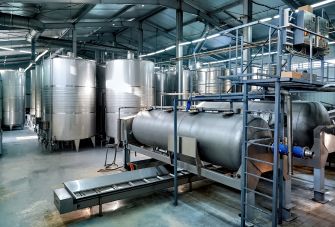Effluent Treatment Plant in Dairy Industry
The dyeing and textile industry is one of the highest water-consuming sectors. In India alone, around 1900 million cubic meters of water were consumed by this industry in 2010, with approximately 75% of that turning into wastewater. This effluent contains a significant concentration of hazardous chemicals, dyes, primers, and solvents, making proper treatment essential.
An efficient Effluent Treatment Plant (ETP) is not just recommended but mandated by government regulations. It ensures that industrial wastewater is treated properly before being discharged into the environment or reused for non-potable purposes.

One of the major issues in textile industry effluents is high pH and chemical content, which requires a robust neutralization process using agents such as sodium hydroxide, lime, and sodium carbonate. This step is critical for bringing the pH to acceptable levels before further treatment.
Advanced Treatment Processes
At Hydro Water Industries, we implement biological oxidation processes, which are cost-effective, minimize sludge generation, and help oxidize dissolved organic and biodegradable matter. This treatment method removes a wide range of pollutants efficiently.
Our systems are also equipped for membrane filtration technologies such as Nanofiltration, Reverse Osmosis (RO), and Ultrafiltration, providing the capability to recycle treated water back into the system for reuse, ensuring sustainability.
Our treatment systems are available in manual, semi-automatic, and fully automatic configurations and can be customized to meet the specific needs of each facility. They are built to handle large volumes efficiently and are easy to operate and maintain.
Wastewater and Treated Water Characteristics
According to PCB (Pollution Control Board) norms, the characteristics of wastewater before and after treatment are:
| SN | Parameter | Before Treatment | After Treatment |
|---|---|---|---|
| 1 | Temperature | 25°C to 35°C | Not to exceed 5°C above ambient |
| 2 | Colour | Light yellowish | Colourless |
| 3 | Odour | Present (light) | Nil |
| 4 | pH | NA | 6.5 to 8 |
| 5 | TSS | NA | Compliant with norms |
| 6 | Oil and Grease | NA | Compliant with norms |
| 7 | BOD | NA | Compliant with norms |
| 8 | COD | NA | 150 mg/l |
Note: BOD load is evenly distributed, hence no separate BOD removal is required.
Treatment Concept
Effluent is collected in an underground equalization tank, after passing through a bar screen chamber and oil & grease trap.
Air agitation is provided for maintaining homogeneity.
Effluent is pumped to a flash mixer, where precise chemical dosing (coagulants) occurs via automatic pumps.
The mixture flows into a clari-flocculator tank with flocculant dosing, encouraging the formation of sludge.
Clarification is done through an inclined tube settler (PVC tubes at 60°), separating sludge.
Sludge is dewatered using sludge drying beds or filter presses, and the resulting sludge cakes are disposed of in PCB-designated landfills.
Treated water proceeds to the treated water holding tank (TWHT).
Water undergoes further treatment through Dual Media Filter (DMF) and Activated Carbon Filter (ACF) to remove TSS, colour, and odour.
Final water is either discharged safely or reused for horticulture or floor washing.
Scope of Supply
A. Primary Treatment Section
| Item | Quantity |
|---|---|
| Bar screen | 01 No. |
| Effluent transfer pump | 01 No. |
| Air blower | 01 No. |
| Aeration grids | 01 Lot |
| Packaged treatment unit | 01 Set |
| Chemical dosing systems | 03 Sets |
| Filter feed tank | 01 No. |
B. Secondary Treatment Section
| Item | Quantity |
|---|---|
| Filter feed pump | 01 No. |
| Dual Media Filter | 01 No. |
| Activated Carbon Filter | 01 No. |
| Filter Feed Tank | 01 No. |
| Chlorine Dosing System | 01 Set |
C. Other Items
| Item | Quantity |
|---|---|
| Piping and Instrumentation | As per P&ID |
| Treated Water Storage Tanks | 02 Nos. |
| Transfer Pump, 1.5 HP | 02 Nos. |
| Transfer Pump, 7.5 HP | 01 No. |
| Control Panel and Cabling | 01 Lot |
Key Features of ETP for the Textile and Dairy Industries
Designed for continuous flow wastewater with chemical pre-treatment.
Underground installation of key components saves floor space.
All above-ground tanks constructed in MSEP for durability.
Treated water can be reused for toilet flushing, greenbelt development, or floor washing.
Dewatered sludge is disposed of at PCB-approved landfill sites.
ETP system boundary starts at effluent inlet and ends at treated water outlet.
Electricity and tap water at the site are to be provided by the client.
In-house sampling reports are provided. Third-party sampling is optional and chargeable.
Enquiry Number
+91 93690-75730
hydrowaterindustries@gmail.com
Address
Kh. No.608/1, Asaudha, Balaji Industrial Area Bahadurgarh, Haryana
